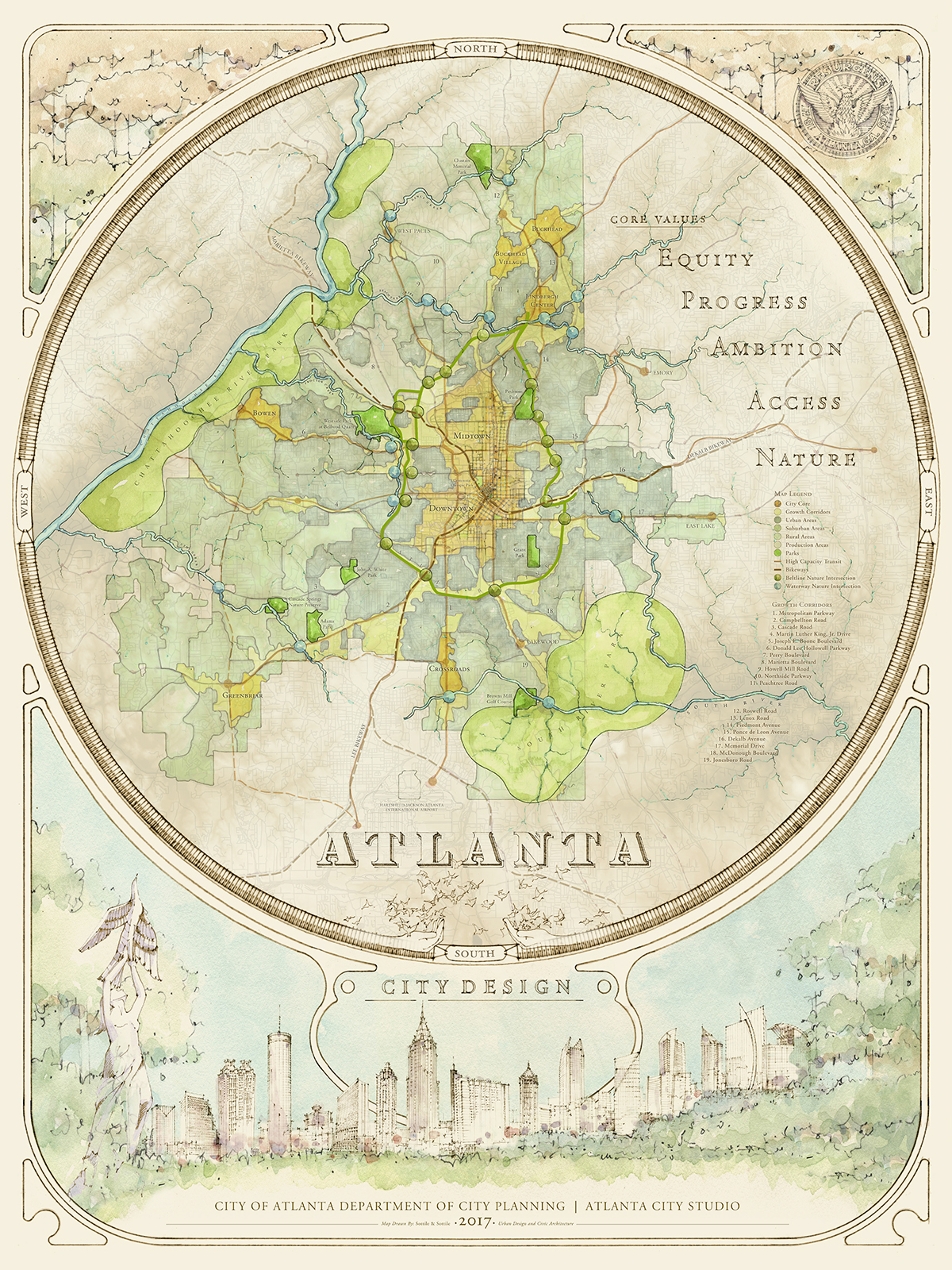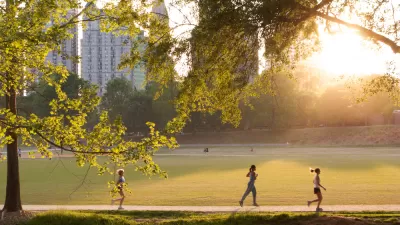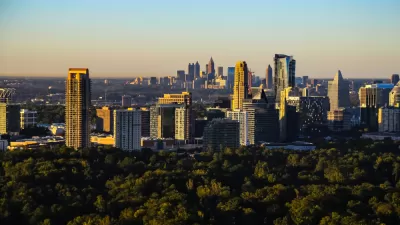Two of the most prominent planners in Atlanta have released a book to help set an agenda for equity as the city grows in the next two decades.

Atlanta Planning Commissioner Tim Keane and urban designer Ryan Gravel (famous for thinking up the idea for the Atlanta BeltLine) released the Atlanta City Design book earlier in September, culminating a two-year project intended to echo through the decades.
Jared Brey reports in detail on the story for Next City, explaining that Atlanta City Design "is meant to inform and shape all of Atlanta’s various plans, codes and ordinances. The document is not a plan itself, but 'a strategic realignment of existing plans' that seeks to lock some core city-building principles into everything Atlanta does."
Brey explains how the book embraces the city's growth, trusting that design can accommodate the city's newcomers while working toward equity as inspired by the "idea of the 'Beloved Community,' discussed by Martin Luther King Jr. in a 1957 sermon called the Birth of a New Nation." Brey writes in more detail:
The five values highlighted in the book — nature, access, ambition, progress and equity — reflect many of the efforts that cities across the world are struggling with today. How do we embrace and protect the natural aspects of the urban environment? How do people move around a landscape marked by gridlocked highways? How does a city welcome newcomers while looking out for the interests of marginalized communities? How do we fight poverty and build racial equity?
The question is, then, whether the book will influence the city's leaders as they navigate a complex election cycle and deal with the fallout of challenges with gentrification and displacement as a result of large-scale revitalization projects.

FULL STORY: New Atlanta Planning Book Takes Cue From Martin Luther King Jr.

Maui's Vacation Rental Debate Turns Ugly
Verbal attacks, misinformation campaigns and fistfights plague a high-stakes debate to convert thousands of vacation rentals into long-term housing.

Planetizen Federal Action Tracker
A weekly monitor of how Trump’s orders and actions are impacting planners and planning in America.

San Francisco Suspends Traffic Calming Amidst Record Deaths
Citing “a challenging fiscal landscape,” the city will cease the program on the heels of 42 traffic deaths, including 24 pedestrians.

Defunct Pittsburgh Power Plant to Become Residential Tower
A decommissioned steam heat plant will be redeveloped into almost 100 affordable housing units.

Trump Prompts Restructuring of Transportation Research Board in “Unprecedented Overreach”
The TRB has eliminated more than half of its committees including those focused on climate, equity, and cities.

Amtrak Rolls Out New Orleans to Alabama “Mardi Gras” Train
The new service will operate morning and evening departures between Mobile and New Orleans.
Urban Design for Planners 1: Software Tools
This six-course series explores essential urban design concepts using open source software and equips planners with the tools they need to participate fully in the urban design process.
Planning for Universal Design
Learn the tools for implementing Universal Design in planning regulations.
Heyer Gruel & Associates PA
JM Goldson LLC
Custer County Colorado
City of Camden Redevelopment Agency
City of Astoria
Transportation Research & Education Center (TREC) at Portland State University
Jefferson Parish Government
Camden Redevelopment Agency
City of Claremont





























